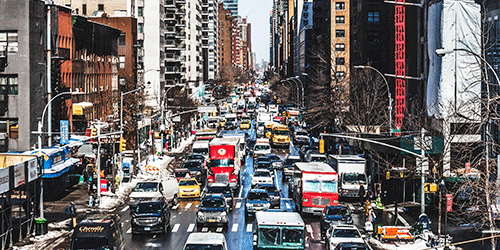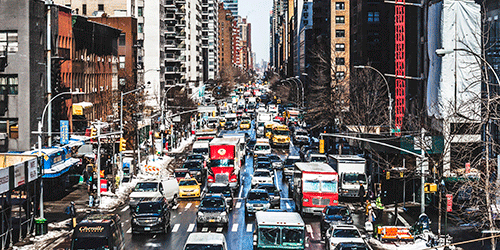When Cyberattacks Bring Traffic to a Halt
In 2015, two hackers showed they could derail a Jeep by taking control of its WiFi. A more serious cyberattack involving many cars hasn’t yet occurred, but the possibility that it might inspired a mathematical study by researchers at the Georgia Institute of Technology, Atlanta, and the Massachusetts company Multiscale Systems, Worcester. The team considered a hacking scenario where multiple cars are brought to a stop, and they estimated how many cars would have to be affected in order to block Manhattan traffic.
The team started by simulating traffic on a single, multilane road, using known models for the way moving cars change speed or switch lanes in response to other vehicles. They then assumed some of the cars suddenly stopped, acting as obstacles. Their simulations for various car densities and fractions of stopped cars showed that traffic comes to a halt about 15% of the time. The researchers were able to predict the probability of these “no-flow” situations using a percolation model because a road is blocked when stopped cars span—or “percolate” across—all lanes.
To tackle Manhattan’s multitude of interconnected streets, the team folded their percolation model into a network theory. They predict that the city’s street network “fragments”—vehicles in one section can’t make it to another—when 13 cars per kilometer per lane are disabled. That’s about 30% of the cars on the road during mid-day traffic in Manhattan—a tall order for a hack, admits coauthor Jesse Silverberg. But it’s not inconceivable considering how many of the city’s cars are made by just a few manufacturers. And, Silverberg says, just because a problem is hard doesn’t mean it’s not going to happen.
This research is published in Physical Review E.
–Jessica Thomas
Jessica Thomas is the Editor of Physics.





